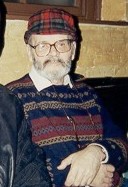
Lucio Fulci was an Italian film director, screenwriter, and actor. Although he worked in a wide array of genres through a career spanning nearly five decades, including comedies and spaghetti Westerns, he garnered an international cult following for his giallo and horror films.
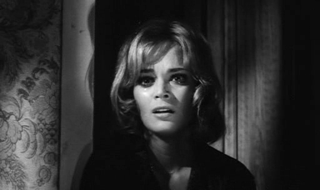
In Italian cinema, giallo is a genre of murder mystery fiction that often contains slasher, thriller, psychological horror, sexploitation, and, less frequently, supernatural horror elements.

Lamberto Bava is an Italian film director. Born in Rome, Bava began working as an assistant director for his director father Mario Bava. Lamberto co-directed the 1979 television film La Venere d'Ille with his father and in 1980 directed his first solo feature film Macabre.

Blood and Black Lace is a 1964 giallo film directed by Mario Bava and starring Eva Bartok and Cameron Mitchell. The story concerns the brutal murders of a Roman fashion house's models, committed by a masked killer in a desperate attempt to obtain a scandal-revealing diary.

Umberto Lenzi was an Italian film director, screenwriter, and novelist.
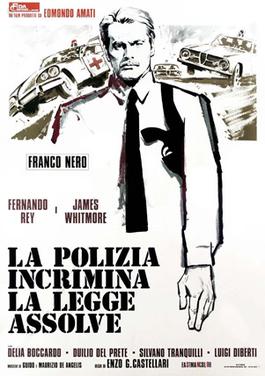
High Crime is a 1973 Italian-Spanish poliziottesco film directed by Enzo G. Castellari. The film stars Franco Nero, James Whitmore, Delia Boccardo and Fernando Rey. High Crime was a big success at the time of its release, and helped popularize the Italian cop thriller genre.
Sergio Salvati is an Italian cinematographer who was born in Trastevere, a working-class neighborhood of Rome, Italy. His father, Aldofo Salvati, was already a key grip in the early days of Italian cinema, and through his father's contacts Sergio began his career developing negatives in a small photographic laboratory in Rome, the SPES directed by Di Ettore Catalucci.

Pete, Pearl & the Pole, also known as 1931: Once Upon a Time in New York, is a 1973 Italian-American gangster film directed by Luigi Vanzi and starring Tony Anthony.
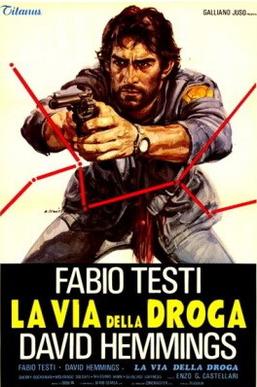
The Heroin Busters is a 1977 Italian crime film directed by Enzo G. Castellari and starring Fabio Testi, David Hemmings and Sherry Buchanan.

Roma come Chicago is a 1968 Italian crime film directed by Alberto De Martino. It stars John Cassavetes.

Payment in Blood is a 1967 Italian Spaghetti Western film. It represents the official film debut for director Enzo G. Castellari of Few Dollars for Django. The film stars Edd Byrnes and Guy Madison.
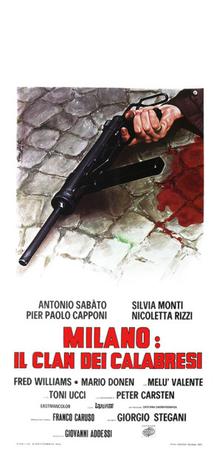
The Last Desperate Hours is a 1974 Italian poliziottesco Mafia film directed by Giorgio Stegani.

Strange Shadows in an Empty Room is a 1976 film starring Stuart Whitman as a tough Dirty Harry type who sets out to discover his sister's killer.
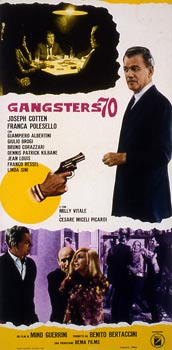
Days of Fire is a 1968 Italian crime-thriller film written and directed by Mino Guerrini.
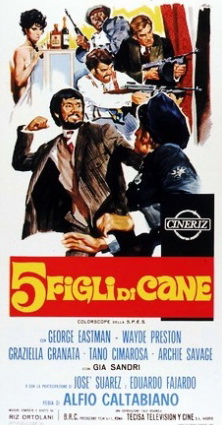
Bootleggers is a 1969 Italian-Spanish crime-action film written and directed by Alfio Caltabiano and starring George Eastman and Wayde Preston. Set in the U.S., it was shot between Spain and Amalfi.

Run, Psycho, Run is a 1968 film directed by Brunello Rondi. The film stars Gary Merrill, Elga Andersen and Georges Rivière. Although filmed in the mid 1960s, Run, Psycho, Run was not released until 1968 in Italy. It subsequently was released directed to television in the United States.
A Sword for Brando is a 1970 Italian adventure film directed by Alfio Caltabiano and starring Riccardo Salvino, Karin Schubert and Tano Cimarosa.

Alfio Caltabiano (1932–2007) was an Italian actor, screenwriter and film director.
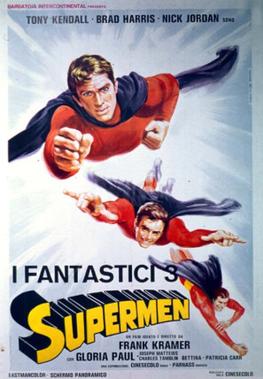
The Three Fantastic Supermen is a 1967 superhero film directed by Gianfranco Parolini. The film was the first in a series of Three Supermen films.

















